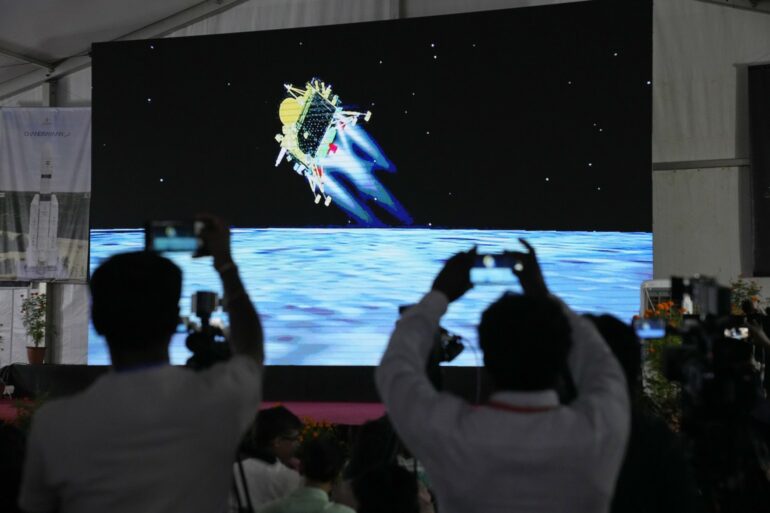India made history as the first country to land near the south pole of the Moon with its Chandrayaan-3 lander on Aug. 23, 2023. This also makes it the first country to land on the Moon since China in 2020.
India is one of several countries — including the U.S. with its Artemis program — endeavoring to land on the Moon. The south pole of the Moon is of particular interest, as its surface, marked by craters, trenches and pockets of ancient ice, hasn’t been visited until now.
The Conversation U.S. asked international affairs expert Mariel Borowitz about this Moon landing’s implications for both science and the global community.
People all across India watched the broadcast of the landing.
Why are countries like India looking to go to the Moon?
Countries are interested in going to the Moon because it can inspire people, test the limits of human technical capabilities and allow us to discover more about our solar system.
The Moon has a historical and cultural significance that really seems to resonate with people – anyone in the world can look up at the night sky, see the Moon and understand how amazing it is that a spacecraft built by humans is roaming around the surface.
The Moon also presents a unique opportunity to engage in both international cooperation and competition in a peaceful, but highly visible, way.
The fact that so many nations – the United States, Russia, China, India, Israel – and even commercial entities are interested in landing on the Moon means that there are many opportunities to forge new partnerships.
These partnerships can allow nations to do more in space by pooling resources, and they encourage more peaceful cooperation here on Earth by connecting individual researchers and organizations.
There are some people who also believe that exploration of the Moon can provide economic benefits. In the near term, this might include the emergence of startup companies working on space technology and contributing to these missions. India has seen a surge in space startups recently.
Eventually, the Moon may provide economic benefits based on the natural resources that can be found there, such as water, helium-3 and rare Earth elements.
Are we seeing new global interest in space?
Over the last few decades, we’ve seen a significant increase in the number of nations involved in space activity. This is very apparent when it comes to satellites that collect imagery or data about the Earth, for example. More than 60 nations have been involved in these types of satellite missions. Now we’re seeing this trend expand to space exploration, and particularly the Moon.

The successful landing prompted celebrations across the country, like this one in Mumbai.
AP Photo/Rajanish Kakade
In some ways, the interest in the Moon is driven by similar goals as in the first space race in the 1960s –…



